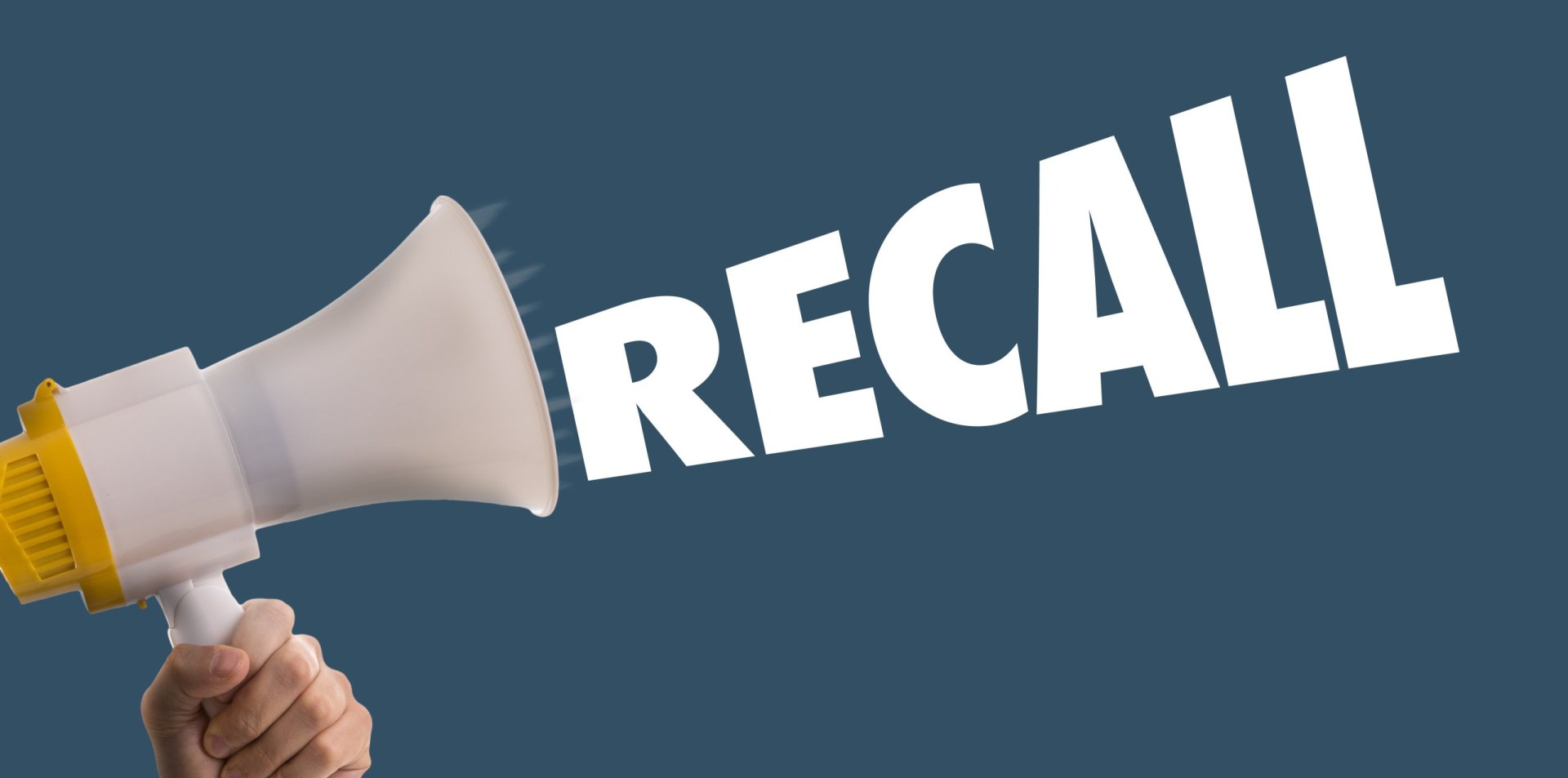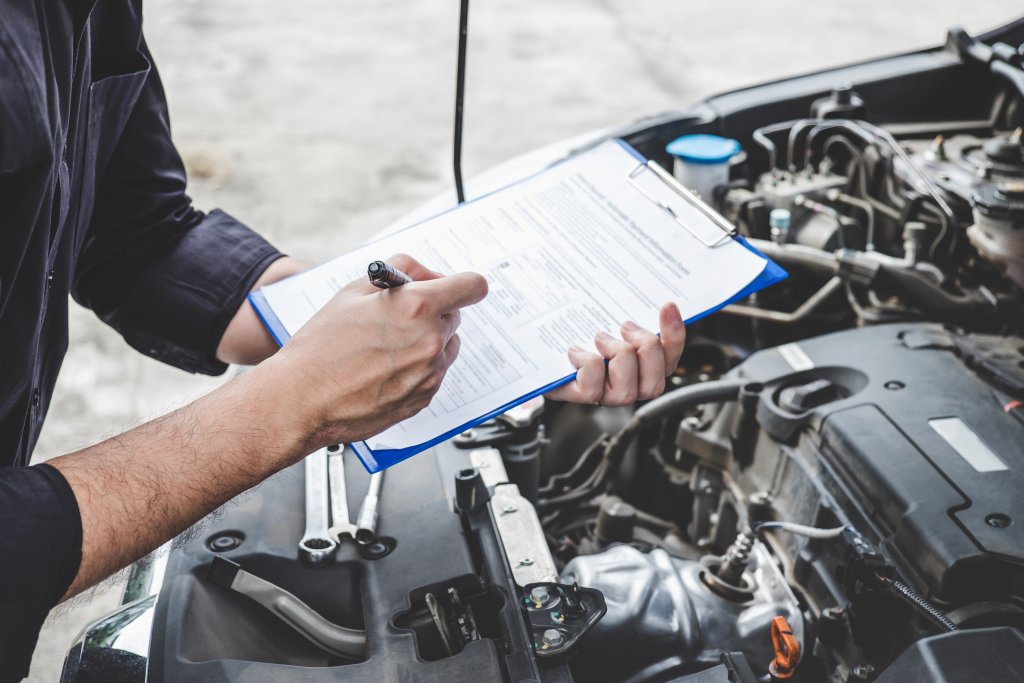This article’s writing was assisted by Claude.ai
Recall:

An official notice issued when a manufacturer has identified a mechanical defect that affects safety, emissions standards, or violates federal regulations.
Recalls require the automaker to fix the issue for free, even if the vehicle is out of warranty.
Repairs are mandatory and completed at authorized dealers at no cost to the consumer.
While the number of vehicle recalls per year and the total number recalled have remained relatively steady over the past couple decades, automakers have become much more proactive about issuing recalls due to improved quality, heightened consumer expectations, and increased scrutiny. This has led to recalls becoming a routine matter for most brands, with the average age of recalled vehicles also rising over time. Looking ahead, recalls will likely remain high annually, though improved engineering and quality control processes could gradually reduce their frequency over the very long term.
Recall can be carried out voluntarily or by mandate. Voluntary recalls are initiated by automakers when they become aware of a safety-related defect. These recalls allow manufacturers to proactively fix issues before injuries occur. Mandatory recalls are enforced by the National Highway Traffic Safety Administration (NHTSA) for defects that pose an unreasonable safety risk. Repairs must be provided free of charge to consumers for both voluntary and mandatory recalls. While voluntary recalls aim to limit liability, mandatory recalls are more serious and require full public disclosure.
Recalls are also generally treated as either safety related or not safety related.
Ordered when there is a safety-related defect that poses a risk to the driver, passengers, or passersby of the vehicle. Examples given include issues with steering, fuel system, wheels, engine cooling fans, etc. that could lead to loss of control or injury. The goal is to fix defects that impact safety.
Not ordered for safety reasons. Examples given include issues with air conditioning, radios, rust, paint quality, etc. These may impact vehicle function and quality but are not considered safety defects. The goal is to fix other vehicle issues unrelated to safety.
Some vehicles and VINs may be included in a recall, while others are not. This is for a few possible reasons:
- Specific Production Range: Recalls often only apply to vehicles built during a certain time frame when the defective part was installed on the assembly line. Vehicles built before or after may not be affected.
- Specific Factories: If the defective part came from a particular supplier, only vehicles assembled in factories that used those parts may be recalled. Other factories using different suppliers may not have the same issue.
- Specific Models/Trim Levels: The defective part may have only been used on certain models or trim configurations in a manufacturer’s lineup, limiting the recall to those versions only.
- Specific Geographic Regions: Recalls are issued by regional offices and may only apply to vehicles originally sold or currently registered in certain states or countries.
- Replacement Parts: Vehicles that already received replacement parts for the same issue prior to the recall may be excluded since the defect has already been addressed.
- Limited Defective Parts: If the problematic part was only installed in a limited number of vehicles before the issue was identified and corrected at the factory, only VINs representing those vehicles will be recalled.
Warranty Extension:

Issued when an automaker agrees to extend the warranty coverage for a specific defect beyond the original terms.
Typically occurs when a defect is identified after the warranty has expired on several vehicles.
An extension allows consumers to get the repair completed free of charge within the extended timeframe and mileage.
Less severe than a recall, but provides additional coverage for a known issue.
If a warranty extension is given it is not uncommon to receive a notification letter saying so. But, don’t depend on notification, call a dealership and ask what you are covered for under the factory warranty (if it’s not expired), and if you’re feeling lucky, ask if any warranty extensions were created for your vehicle or if your potential repair could be related to a technical service bulletin that has a warranty extension.
Technical Service Bulletin (TSB):
TSBs are issued by automakers to provide repair information to dealerships and mechanics on fixes for common mechanical issues. This is not a recall and the repairs are not free unless the vehicle is still under warranty. It’s essentially a set of instructions and guidelines for mechanics to follow when repairing vehicles.
While vehicle recalls do not expire and repairs will be completed free of charge regardless of warranty status, the same does not apply for Technical Service Bulletins (TSBs). TSB repairs are only covered under the original factory warranty or if the automaker has issued a warranty extension specifically covering that part of the vehicle. Once the warranty period has expired you will have to pay out of pocket for any TSB-related repairs that come up.
Unlike recalls, TSBs are merely repair guidelines for mechanics and are not official notices requiring free fixes. So if you discover a vehicle issue that has an applicable TSB after your warranty has ended, unfortunately you will be responsible for the cost of that repair even if it is related to the bulletin. TSBs do not extend the warranty coverage the way a recall would. The only exception would be in very rare cases where an automaker institutes a warranty extension to cover expenses related to a major TSB issue.
How Do You Know Whether or Not Your Vehicle Was Affected by a Recall, TSB, or Warranty Extension?
Be wary of random calls or notices claiming your vehicle is affected by a recall, warranty extension, or TSB – always verify recalls and the like through official manufacturer channels. Call the automakers customer service or call your local dealership.
Recalls:
Most recalls send a letter or two or a lot more – All depending how many recall expansions and re-notifications occur.
It’s common for people to receive multiple recall notices over time because eligibility can expand or an initial fix may require additional touches. So, don’t ignore follow up recall notices, but do verify through the manufacturer website or customer service line before bringing your car in to prevent confusion about which recall applies to your VIN.
Warranty Extensions & Technical Service Bulletins:
Unlike recalls, manufacturers are not required to send notification letters for technical service bulletins (TSBs) but Warranty Extensions have been known to initiate notification. Even so, you may never receive notice, sometimes you move and sometimes mail just gets lost.
TSBs and Warranty Extensions are likely to come up if you bring your car into a dealership with a specific issue that is addressed in a TSB and that TSB may or may not include a warranty extension.
Checking Your Vehicle Identification Number (VIN)
The best way to check for Recalls, Warranty Extensions, and TSBs yourself is by using your vehicle’s Vehicle Identification Number (VIN). This unique code is used to identify your specific vehicle. You can find your VIN printed on your dashboard near the lower corner of the windshield on the driver’s side. It is also located on your vehicle registration and insurance documents.
Take your VIN and check online at the manufacturer’s website, at a dealership, or through the National Highway Traffic Safety Administration’s VIN lookup tool. Doing a quick VIN check can alert you to any open Recalls or TSBs/Warranty Extensions that may be outstanding for your vehicle. Being proactive protects you and your vehicle, since notices aren’t guaranteed to make it to your mailbox.
You should check for open vehicle recalls at least twice per year according to the NHTSA. This can easily be done by looking up your 17-character vehicle identification number (VIN) on the NHTSA website. The steps are:
- Locate your VIN printed on your windshield, door jamb, registration or insurance documents.
- Go to the NHTSA recalls page at NHTSA.gov/Recalls.
- Enter your full VIN in the search bar and submit.
- Review the results to see if your vehicle has any open recalls.
- If a recall is listed, get it fixed for free immediately at your local dealership.
- Following these simple numbered steps twice yearly helps ensure your vehicle doesn’t have any outstanding safety issues.
Have a Dealership Check Your Vehicle Identification Number (VIN)
When bringing your vehicle into the dealership for service, clearly state that you want them to perform a full recall, TSB, and warranty extension check. The service advisor may do a basic warranty check, but specifically request the following:
Ask them to enter your VIN into the manufacturer’s database to check for any open recalls. All recalls should be performed free of charge.
Request that they also check for any technical service bulletins (TSBs) that may be applicable to your vehicle’s make, model and year. Dealerships can charge for TSB repairs if out of warranty.
Inquire about whether your vehicle qualifies for any extended warranty coverage through a warranty extension program. Provide your VIN.
How to Get Your Car Repaired
This article excerpt provides tips on navigating the recall repair process. It covers guidance on scheduling appointments, preparing for the dealer visit, and ensuring the issue is fully fixed. The advice includes maximizing the effectiveness of the time your car spends in the shop, escalating persistent problems, and knowing your rights. Read on for a summary of practical steps to smoothly complete recall repairs.
Contacting Your Local Dealer
Getting your vehicle’s recall repaired can take time and coordination. You can request a loaner car when you schedule service, as repairs can take hours and some dealers have limited availability. Keep in mind, they are not required to give you a loaner vehicle Going to a high-volume dealer experienced with the repairs can help ensure the recall, TSB, or warranty extension is addressed efficiently. You may experience delays getting an appointment due to parts shortages, with some dealers booked months out. Be patient but persistent in scheduling – call the automaker’s corporate customer service line if needed to expedite the process. When you do get a date, have any other work you need done at the same time to maximize the time in the shop. Here’s a list of common maintenance items we’d recommend:
- Oil change and tire rotation
- Cabin air filter replacement
- Wiper blade replacement
- Fluid top-off
- Visual inspection
While most people would probably report their recall fixes are effective, some have needed additional repairs. There’s also a chance of re-recalls or extended warranties as issues emerge. If you incur costs despite the recall or your fix was documented in a technical service bulletin but not covered by your warranty, try negotiating with customer service for goodwill assistance using your service history with the dealer to argue for coverage.
Preparing Your Vehicle for Repair
Here are some tips to prepare yourself and your vehicle before going to the dealership for recall repair:
- Locate your vehicle’s ownership paperwork, service records, and recall notices to bring with you. This helps the service advisor verify eligibility.
- Clean out your car so the techs can easily access needed areas. Remove loose items from seats and trunk.
- Check fluid levels, tires, lights etc. and note any issues to report. This prevents upsells for items you can easily fix yourself.
- Make sure your fuel tank is at least 1/4 full to allow for any test drives after the repair. Running on empty may delay the process.
- Bring entertainment items in case you need to wait for a loaner car or shuttle ride. Portable chargers, books, snacks can make downtime more pleasant.
- Have a backup plan for transportation lined up if you can’t get a loaner car. Consider rides from family/friends, rental cars, public transportation.
- Take notes during check-in on who you spoke with and what was promised. This holds the dealer accountable for any issues.
- Be patient but persistent. Express appreciation for their efforts while politely following up on status updates.
Ensuring the Problem is Resolved
Here are some additional tips to ensure the recall issue with your vehicle was fully resolved after the repair:
- Test drive your vehicle after the repair, even a short drive around the block. See if you notice the issue again.
- Ask the dealership for documentation that shows the recall repair was completed. Review it closely.
- Request a copy of the repair order showing exactly what parts were replaced and what work was done.
- If you notice the issue again soon after repair, promptly contact the dealer and manufacturer to report it wasn’t fully fixed. Request a warranty repair appointment.
- Consider taking your vehicle to an independent mechanic for a second opinion on the repair quality. They can inspect and confirm the fix was done properly.
- Check the manufacturer’s website using your VIN to ensure the recall now shows as “”Completed.”” Print this for your records.
- If problems persist, don’t hesitate to be persistent yourself. Escalate to the dealer’s customer service team and manufacturer’s corporate office if needed.
- Document all repair attempts and conversations. Keep a paper trail in case you need to demonstrate giving them opportunities to properly fix it.
- If all else fails, you may need to file a complaint with agencies like NHTSA to get additional repair assistance.
Staying vigilant protects you until you can confirm the recall issue is fully resolved.
What to Do if You’re Unsatisfied with the Recall, Warranty Extension, or TSB Repair Resolution
- If problems continue after the repair, promptly document them and contact the dealer for further repairs under the recall warranty.
- If the dealer claims recall-related issues aren’t covered, persist politely but firmly. Contact the manufacturer’s customer service team directly to request assistance.
- Escalate to the manufacturer customer service team if the dealer is unhelpful regarding additional repairs needed for the recall / TSB / warranty extension issue. Explain the ongoing problem and request they honor the recall.
- Keep meticulous records of all related repair attempts, costs, conversations. This supports your case if you need to demonstrate giving them opportunities to fix it.
- If the repair remains unresolved after multiple repair attempts and contacting the manufacturer, you may need to file a complaint with agencies like the NHTSA.
- Review your state’s Lemon Laws and talk to a lawyer if you need legal advice. There are legal protections you can exercise for individual car consumers beyond just the NHTSA.
The Role of the National Highway Traffic Safety Administration (NHTSA)
If the problem remains unresolved after multiple repair attempts and contacting the manufacturer, file a complaint with the NHTSA.
- Vehicle owners can file a complaint with NHTSA if they experience a safety issue with their vehicle, tire, car seat, or equipment that could indicate a safety defect.
- NHTSA reviews the complaints and if they receive similar complaints about the same product, they may open an investigation.
- During the investigation, NHTSA analyzes petitions, conducts a defect investigation, and monitors recall management.
- If a safety defect is identified, the manufacturer or NHTSA will initiate a safety recall.
- The manufacturer notifies registered owners by mail within 60 days of notifying NHTSA of the recall.
- The recall notice provides information on the safety risk and instructions on how to receive the free remedy (repair, replacement, refund, etc.) from the dealer.
- NHTSA monitors each recall to ensure owners receive proper remedies in a timely manner.
- Vehicle owners should follow any interim safety guidance and contact their dealer to receive the free recall remedy when notified of a recall by the manufacturer.
Class Action Lawsuits | How They Happen
Class actions begin when one or more people decide to sue on behalf of a larger group who have all been affected similarly, such as owners of vehicles with the same safety defect.
A law firm files the suit against the defendant, usually the auto manufacturer, seeking compensation or action on behalf of the group. The court must certify it as a class action first.
Consumers don’t have to do anything to be included in the class action once certified. It proceeds on behalf of all qualifying individuals automatically. If the suit settles or a judgment is awarded, affected consumers may receive a payment, replacement item, warranty extension or other compensation, minus legal fees.
Settlements often require consumers to relinquish the right to sue individually on the same issue in exchange for the class action relief. Consumers can opt out of a settlement initially and preserve their right to separate legal action but give up the automatic compensation.
Class actions can lead manufacturers to recall or repair vehicles, but the legal process is lengthy so immediate individual action may be faster.
Sources:
- https://support.toyota.com/s/article/What-is-a-Technical-S-7656?language=en_US#:~:text=A%20TSB%20is%20not%20a,does%20not%20extend%20the%20warranty.
- https://www.roadandtrack.com/car-culture/a30755/the-difference-between-recalls-and-technical-service-bulletins/#:~:text=The%20TSB%20is%20a%20guide,can%20be%20done%20under%20warranty.
- https://www.forbes.com/sites/stevetengler/2022/02/28/auto-recalls-down-overall-but-not-for-everyone/?sh=7f1bcd4531ea
- https://www.autonews.com/assets/pdf/nada%20ucg_whitepaper_impact%20of%20vehicle%20recalls.pdf
- https://protectmycar.com/blog/when-is-a-car-repair-free-know-these-3-types-of-vehicle-recalls
- https://www.nhtsa.gov/sites/nhtsa.gov/files/documents/mvdefectsandrecalls_808795.pdf
- https://www.roadandtrack.com/car-culture/a30755/the-difference-between-recalls-and-technical-service-bulletins/#:~:text=But%20I%20have,for%20the%20repair.
- https://www.nhtsa.gov/resources-investigations-recalls#:~:text=Do%20recalls%20expire,recall%20never%20expires.
- https://www.nhtsa.gov/sites/nhtsa.gov/files/documents/mvdefectsandrecalls_808795.pdf
- https://static.nhtsa.gov/odi/tsbs/2014/SB-10056880-3622.pdf
- https://www.nhtsa.gov/recalls
- https://en.wikipedia.org/wiki/Lemon_law
- https://www.nhtsa.gov/resources-investigations-recalls#legal:~:text=Webpage%20%7C%20PDF-,Legal,NHTSA%20regulates%
- https://www.nhtsa.gov/recalls#7756
- https://www.nhtsa.gov/sites/nhtsa.gov/files/documents/mvdefectsandrecalls_808795.pdf

At FIXD, our mission is to make car ownership as simple, easy, and affordable as possible. Our research team utilizes the latest automotive data and insights to create tools and resources that help drivers get peace of mind and save money over the life of their car.














